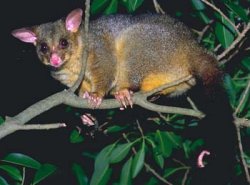Detailed below are some of the most common pests and diseases of fuits and vegetables, along with management strategies to control.
We hope you find this information useful. To see more information about pests and diseases, sign up for our Membership Site.

Fruit Fly are one of the most annoying and destructive pests of summer. They invade orchards, fruit bowls and even bins.
There are several methods to control fruit fly, including insectisides. However if you'd like to try making an organic fluit fry trap yourself, try one of these two options:
It’s easy to make this simple ‘Fruit Fly Pot’ fly trap to help you monitor your crop for fruit fly and other flying pests. All you need is a two litre plastic container, such as a soft drink bottle, with a lid.
Cut three holes in the bottle, each about the size of a ten cent piece, about 10cm down from the top of the bottle. Add the bait mixture (see below), then tie a string around the lid (or handle, if the bottle has one) and hang it in a shady part of your fruit tree, about 1 to 1.5m above the ground.
If you find pests in your bottle, get expert help to identify them. If you suspect fruit fly infestation, call the Hotline on 1800 084 881.
Flycatcher mix
Mix one cup of 100% fruit juice (including pulp) with a tablespoon of cloudy ammonia (or wheelie bin cleaner). The mixture will last up to three weeks but it’s better to change it every week to get the best results. Cloudy ammonia is available from supermarkets and hardware stores.
Other traps which can be used inside the house are a glass bowl with clingfilm on top with a suitable bait inside such as banana peel and a little wine. Just punch some holes in the cling wrap and the fruit flies will hopefully prefer the trap over your fruit bowl.
Or you can cut the top 1/3rd from a soft drink bottle, place the trap in the bottom half, then place the lid back on upside down (like a funnel). Tape the edges together and you have a movable fruit fly trap.

Having personally been "robbed" by possums, I am now an expert in what doesn't work.
Moving our tomatoes, citrus, chillies, eggplants, pineapple, and strawberries to our balcony did not work, even though the balcony is 17ft from the ground.
Trimming away nearby branches also didn't work - possums can jump remarkably far!
Ringbarking the verandah poles with metal and/or plastic doesn't work (the little beggars are acrobats).
What has worked (so far) is tying netting over the pots. All of the pots are against the balcony railing, so we have just tied a long length of cheap green netting (from the $2 shop no less!) over the balcony raliing, then cut small holes at the bottom and tied them together.
Tomatoes, strawberries and lemons hanging in there so far!
Powdery mildew is a dreadful disease that affects many plants including tomatoes, pumpkin and squash, and beans. It is generally prevalent in dry shady areas with poor circulation.
The key thing with powdery mildew is it can lay dormant in the soil for years, so all affected plants and leaves must be disposed of in the bin!
Insectisides such as Neem oil are available, or you can make your own using a teaspoon of baking soda to 2 litres of water with just a small sqirt of liquid soap. Spray early in the morning to avoid sunburn on your leaves.
There's also a school of thought that powdery mildew hates water, so you could try watering daily, again early in the morning.
This is a nasty disease, and you have probably seen it on store bought produce such as potatoes and carrots. It infects a wide range of vegetables and fruit and multilplies faster than fleas! Vegetables affected include lettuce, tomatoes, the brassicas, peas, beans and carrots.
Sclerotina starts out as a white powdery fungus (similar to powdery mildew), but it then turns black and hard, and can either be long and thin, or a smal black circular spot. In some crops such as tomatoes it can actually be found inside the stem.
Treatment can be via insectiside such as Boscalid, use of disease resistant plants and seeds, or crop rotation of garden beds with disease resistant crops such as sweet potato and onions.